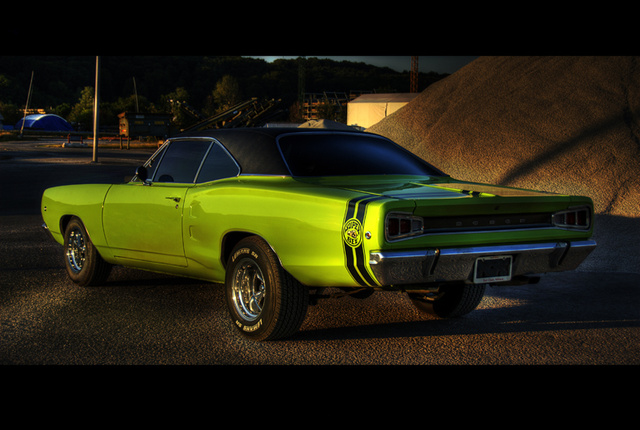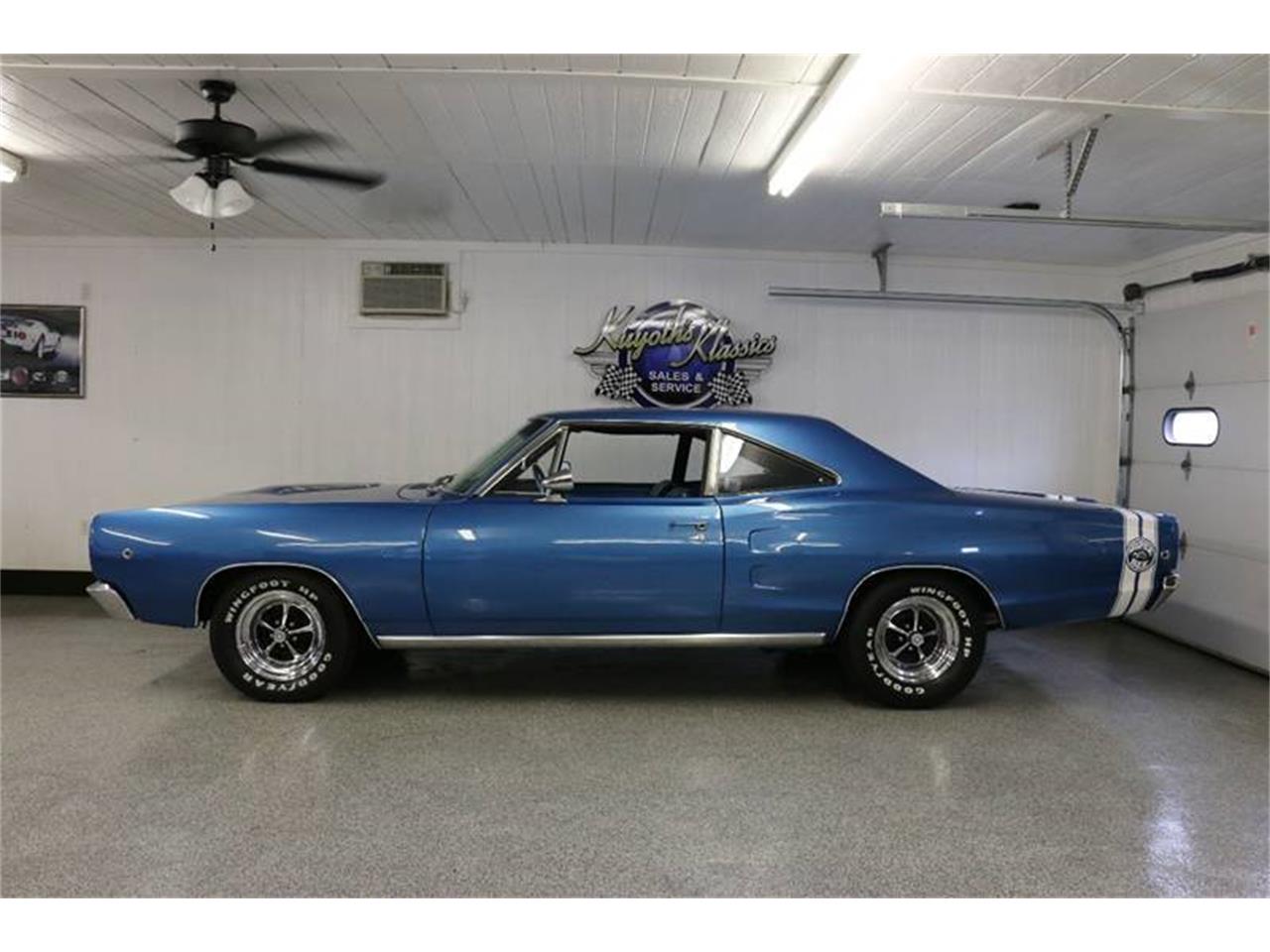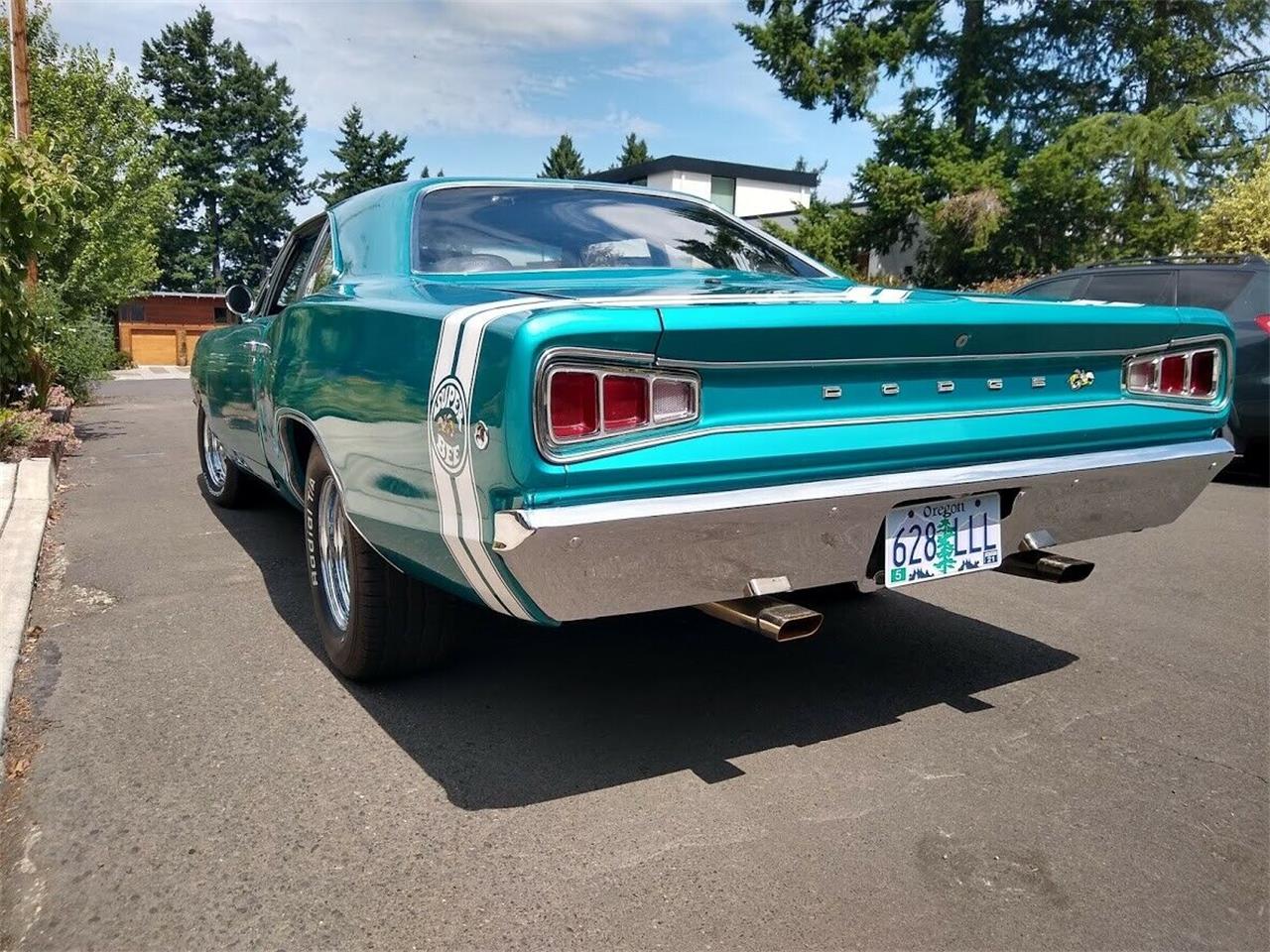

With the success of the Plymouth Road Runner, the Dodge arm of the company wanted their own version of the B-body muscle car sales. Further, a huge trunk made it a great cruiser, but the massive unrefined V8 gives horrible mileage, with 10 MPG at best for the 440 Six-Pack - not that it matters when driving a muscle car.GR Auto Gallery is pleased to present this 1968 Dodge Super Bee for purchase. Measuring in with 34.6” of headroom and 42” legroom for the front seats, rear passengers also got similar space with 37” of headroom and 41” of legroom. For comparison, a 2021 Dodge Charger has 38.6" of headroom and 41.8" of legroom up front, and in the back, seats get 36.6" of headroom and 40.1" of legroom - though is a 4-door design compared to the Super Bee's 2-door coupe body. In terms of spaciousness, the Super Bee was as roomy as it was powerful, even when it came to rear seats. Included in this, optional vinyl bucket seats and the standard Hurst shifter were cool, but the overall impact is in how straightforward and purposeful the interior is, with the Charger’s clean, rounded all-analog gauge filled dashboard looking sweet inside the Coronet, and bits like the wood steering wheel to complete the look. Even truer thanks to its budget muscle purpose, the Super Bee was s lightly higher-end than the Road Runner, but the theme of stripping options remained, though with a few nice touches to go around. Like the rest of 1960s muscle, the Super Bee's interior is extremely basic compared to today’s cars, stunning with details rather than a feature-packed design. 1970 saw the most dramatic styling change though, using the Coronet’s facelifted two oval grilles, called Bumble Bee Wings, this year arguably was the coolest it looked, but otherwise was the same as 1969 for engines and mechanical aspects. With that Six-Pack though, 0-60 took 6.3 seconds, and 13.8 for quarter mile, offering some great numbers for the time. Weighing in at 3,440 lbs, the Super Bee was no slouch even without the Six-Pack, hitting 0-60 mph in 7.0 seconds with a 15.3-second quarter-mile in 383 form.

Related: Here's How Much A Classic Dodge Viper Is Worth Todayīuyers of the '69 Super Bee with the Six-Pack also received a matte black fiberglass hood, distinguished by its unique Lift-Off design to prop it up, and also decked out with a truly massive scoop. An expensive option, the 425 hp 426 cu-in Hemi saw just over a hundred buyers in the Super Bee, so, while making 35 hp less, the 390 hp 440 Six-Pack was still a huge improvement thanks to a far lower price. But, halfway through the year, Dodge offered a new engine for it that would make things truly awesome, the 440 cu-in Six-Pack V8 - so named for its array of three 2-barrel carbs feeding the engine. Updated for 1969, the Super Bee looked, and was, mostly the same, only offering new bits like optional side-mounted hood scoops, as well as a new grille and headlight design. The main difference was the name, and the Super Bee was a clever pun (Bee = B-Body), with special badges themed around it. While it had a slightly different front end design, 1" longer body, and dashboard from the Charger, this new Super Bee mechanically was basically the same car as the Road Runner and had that same 426 Hemi as an optional engine, and similarly raised the price by around 33%, if chosen. While the 383 V8 was meant to be only used by the Road Runner, Dodge ignored that memo and bestowed it into the Super Bee, carrying out a similar options diet to give it a lower price. So, in 1968 during the Road Runner's debut year, the Super Bee was launched at the Detroit Auto Show with the same formula, purpose, and platform. Positioned as a higher-end brand to Plymouth at the time, Dodge saw the immediate success of the Road Runner, and also that doing the same to the similarly B-Body based Coronet R/T wouldn't be difficult at all.

Powered by a 383 cu-in V8 with 4-barrel carb designed specifically for the car, the intake, heads, cam, and exhaust from the larger 440 cu-in V8 were used to bring the smaller motor to a total of 335 hp, furthermore, for a price you could also option in the 425 hp 426 cu-in Hemi V8 if you wanted a truly wicked car.

Stripping the GTX of almost every option that wasn't purely focused on performance, and substituting lower-priced performance ones where possible, the first Road Runner debuted in 1968 offering GTX levels of power without the GTX price - and also was slightly lighter as a result.


 0 kommentar(er)
0 kommentar(er)
